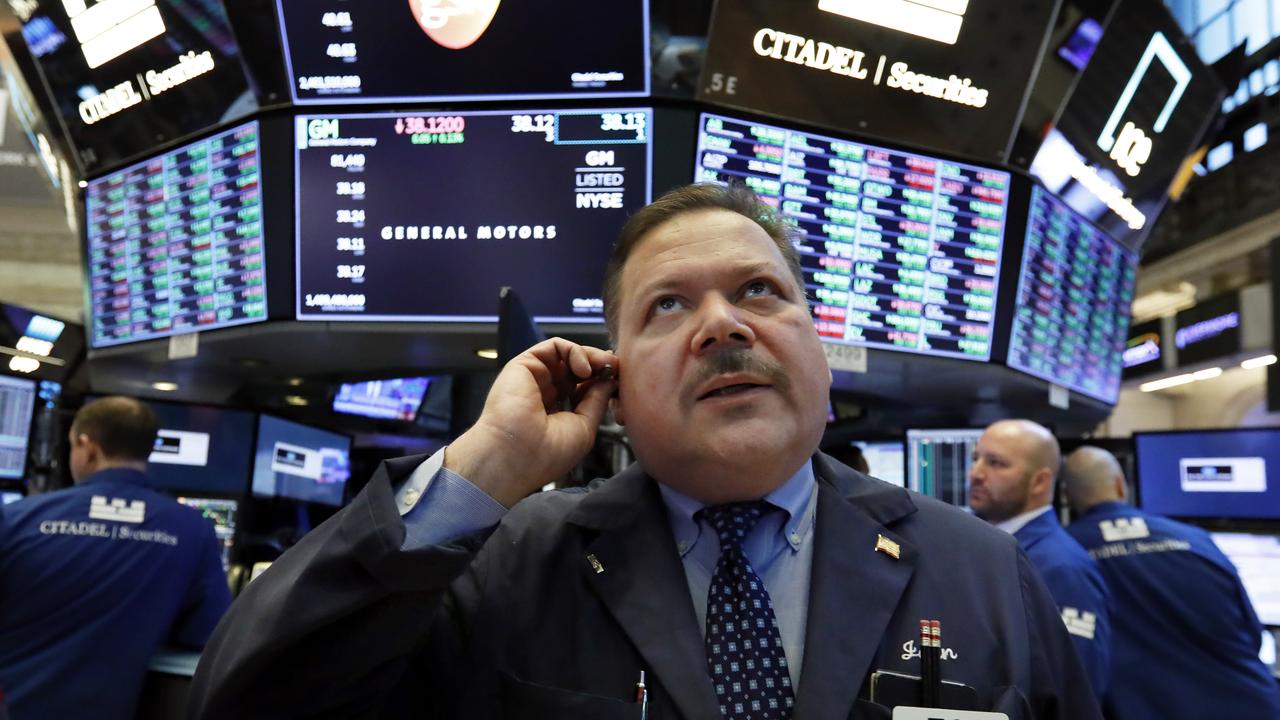Lower rates help stocks but won’t spur growth
The longer-term outlook for the stimulus-addicted sharemarket and economy looks messy.
After surging 11 per cent from its post-Brexit low, the benchmark S&P/ASX 200 has fallen 2.2 per cent, eclipsed only by European markets amid worries about Italian banks. The 6.3 per cent rise in July made it the strongest month since 2011 and its best July since 2009.
But notwithstanding the sharemarket’s stretched valuation on a price-to-earnings basis and the prospect of a further pullback after such a strong rise last month, the latest interest rate cut should push more self-managed super fund investors from cash to shares.
Credit Suisse says that for each 25 basis point cut in official rates, SMSFs need to switch $10 billion out of cash into equities to maintain the yield on their funds.
Moreover, the prospect of further rate cuts locally and “lower-for-longer” monetary policy globally should tend to keep shares at above-average PE valuations for the foreseeable future. All bets are off if US inflation breaks out and the Fed is forced to crank up interest rates.
Of course another global “crisis” could upset the apple cart. But having seen how quickly markets recovered from Brexit risk and then rallied in anticipation of a global policy response — even if it ends up causing only British interest rate cuts and a slower pace of US interest rate hikes — the hunt for yield might also see markets shake off concern about Donald Trump making it to the White House, or some other nations voting to leave the EU.
Assuming the global hunt for yield continues to generate an above-average PE ratio and there’s some further recovery in earnings per share, the index is expected to be up around 5700 points a year from now, according to strategists.
Similarly, if analysts are correct about their 12-month price targets for the top 200 companies, the index will be up around 5537 points, according to consensus forecasts. So overall, the index should be in for a positive if unspectacular year ahead.
That said, the fact that one-year forward PE ratios for the US S&P 500 and the S&P/ASX 200 exceeded or came close to the highest levels in a decade this week — points that have triggered substantial corrections in the past — could be all it takes to trigger a pullback. Traders will be watching technical support levels at 2135 and 5400 points, respectively.
As Credit Suisse equity strategists point out, the hunt for yield saw the dividend yield on the S&P/ASX 200 fall to 4.3 per cent this week from 5 per cent, but the spread between the official cash rate and the aggregate dividend yield remains close to record highs at 2.8 per cent. And the cost of share buybacks and acquisitions has never been cheaper.
“The central bank is encouraging Australia Inc to leverage up, and we think Australia Inc should listen,” they say. “A buyback has hardly ever been as accretive as it is now.
“Similarly, the RBA is inviting more debt financed M&A. We continue to forecast sideways markets into year end, but alpha (risk-adjusted performance) will be available among those stocks that benefit from the lowest cost of debt in a generation.”
Still, the longer-term outlook for the stimulus-addicted sharemarket and economy looks messy. Apart from tempting investors to take more risk in equities, record low interest rates are leading companies to raise distributions and cut capital expenditure to appease investors, which means less potential growth and that could eventually affect dividends.
It also means lower employment and wages, which pushes inflation down and leads to even more accommodative policy from central banks.
“The RBA has succeeded in supporting asset valuations (but) when it comes to encouraging capex, the RBA has failed,” Credit Suisse equity strategist Hasan Tevfik says.
“It has become clear around the world that easier central bank policy has been ineffective in supporting growth and inflation. Rather the opposite seems to be closer to the truth.
“Low rates have become a problem, they are not the solution. Still, we do not see rates rising anytime soon and easy monetary policy will continue to hold down the cost of debt for Australia Inc.”







The Reserve Bank’s interest rate cut this week was well anticipated by financial markets so with offshore equities coming off, the local bourse has suffered its biggest two-day fall since the Brexit vote rocked global markets in late June.